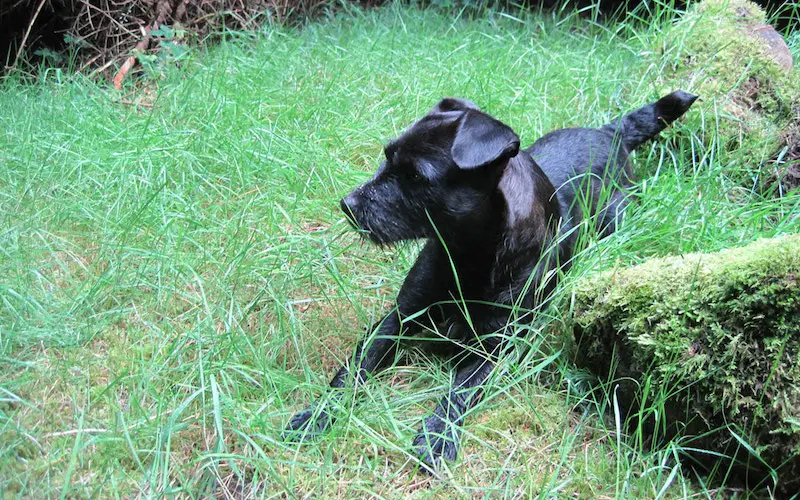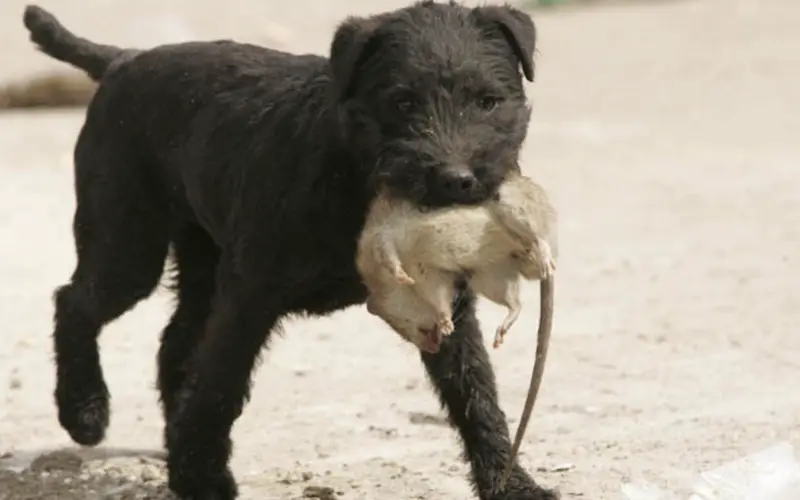patterdaleterriers.co.uk is a participant in the Amazon Services LLC Associates Program and other affiliate advertising programs designed to provide a means for us to earn fees by linking to Amazon.co.uk and affiliated sites. Affiliate links may be used on this page and in patterdaleterriers.co.uk articles, but they do not impact on the price that you pay and they do help me to get this information to you for free. Read my privacy policy for more information regarding affiliates.
Fiesty and highly energetic, this dog was primarily bred for hunting foxes and badgers, and still gets used as a ‘working dog’ today. Let me introduce you to the working Patterdale terrier.
Where did the working patterdale terrier originate?
Sometimes referred to as the black fell terrier, the working patterdale terrier is a beautiful breed, originating in England, to be more specific, the Lake district. Small and wiry nature, the build of the working patterdale terrier made them nimble and agile and so perfect for the role they came to play- hunting.
The fells are an extremely rocky part of the Lake district, so difficult to traverse that even horses cannot navigate the feels. Enter the working patterdale terrier, always used to hunt. These very beautiful, silky, black or brown speckled sweethearts used to slide into fox dens and scare foxes and badgers out for their masters to hunt. If the fox wouldn’t move, the patterdale would stand its ground and if necessary, kill the fox itself.
They descend from northern terriers, to be more precise, from one man called Joe bowman, a hunter in Ullswater. It’s thought that the terrier got its name after a dog show in Patterdale (St Patrick’s Dale) a village at the southern end of Ullswater, near the Lake district fells. Bingo, a rusty coloured dog owned by Joe Bowman,is purported to be the first working patterdale terrier in the 1930’s.
However, the breed didn’t take off until the 1950s. Cyril Breay and Frank Buck began to really cultivate the breed.
Mystery shrouds the origins of the patterdale terriers. While the 1930s Patterdales were shaggy black Fells, Breay’s early dogs were slape-coated black- speckled dogs with big heads. Cyril Breay originally bred bull terriers, did he interbreed them with the patterdale terrier? The intrigue lives on because Cyril Breay never kept records. Even though he swore there was no Bull Terrier in his dogs, there are genetic similarities prompting the rumours which will never be answered.
Breay didn’t actually work hands on with his dogs, preferring to leave that to his friend and partner, Frank Buck. Buck’s own line of dogs were descended from the Ullswater terriers kept by Joe Bowman. In the 1960s, Brian Nuttall furthered the breed and many of the best patterdale terriers today descend from his bloodlines.

The history of the Working Patterdale Terriers
Working Patterdale terriers were originally bred to go down badger setts and into fox dens to drive out the badgers and foxes. Patterdale terriers are nimble and agile. Fantastic for slipping into fox dens. Apart from their physical qualities, the patterdale terrier possesses a strong prey drive. They are more flexible than most terriers and can squeeze into rocky crevices, making them very successful at their jobs. The patterdale terrier is simply very obedient and a great hunter. However, these feisty dogs will not back down. Facing an unruly fox, the patterdale is more than capable of killing the fox if it wouldn’t budge. The patterdale would enter a den and bark and nip aggressively, sending the badgers or foxes out into the range of the hunters.
Although the patterdale terrier makes a sweet pet, their primary purpose originally was as hunting aids.
They were also used as ratters on farms. Rats can be a massive nuisance and a death sentence to a farm.Rat poison is unsafe and not always effective, not to mention slow as well. Terriers have great hunting instincts and sensitive noses. Terriers have long been used as the best form of pest control and the patterdale terrier is no exception.
Since the ban on fox hunting in England, there are limits on what the working patterdale can do – they are allowed to be used to go out hunting as long as they are only used to protect game birds.
In accordance with English law, patterdale terriers themselves may not kill foxes. Since 2004, they simply drive them out for their owners to shoot humanely.
Hunting with patterdale terriers is not without risks. The small terrier can become stuck underground and need rescuing. Also, thistles and brambles cause serious injury to tails, since the patterdale is so jumpy and adventurous, it will not stay away from thorny patches, diving straight in and returning covered in blood. The best solution for hunting with a patterdale and avoiding tail injury is to dock its tail.
Tail docking of Working Patterdale Terriers
Tail docking is the practise of removing part of a dog’s tail to prevent injury during its working life. Tail docking is illegal for almost all breeds in England since 2007. However terriers may have their tails docked by a trained vet until they are over 5 days of age.

Within the first 5 days, a puppy has no active nerves in its tail and will not feel any pain, allowing it to avoid injury during its working life from thistles, brambles and bites. The tail will heal quickly with a very low risk of infection. After 5 days, the puppy will feel pain and the procedure is illegal.
The owners must obtain a special license to dock their puppy’s tail by proving that it will be a working dog.
Patterdale Terriers as Pets
Patterdale terriers, apart from being utterly adorable, make excellent pets because whilst sharing the traits of terriers and bulldogs, they are calmer and far less aggressive. They are very obedient once trained with a mischievous spirit.

Energetic and intelligent, they need frequent stimulation, making them fantastic pets for working families. Patterdale terriers tend to become ill infrequently compared to other breeds, being robust and healthy. They typically live between 12 and 15 years.
Despite originally bred as working dogs, the working patterdale terrier makes for an excellent, healthy, friendly, energetic companion for active families and owners.
If you enjoyed this article you might also like to read about Are Patterdale Terriers working dogs or Pets?


Lulu our third rescue Patterdale . Has become bad on her lead . (Been with us 18 months ) Was fine until recently !
Pulls and also will suddenly stop and refuse to move ! Halti not much effect – treats in pocket etc etc All seems to have started since Virus saga !We have quiete park just accross the road where we always take her – Advice would be very much appreciated . Thank you !
Mandy, we have the same thing with our Patterdale! In my experience it’s the excitement of getting to the park that makes them pull! Have you tried mixing up the route a little so she doesn’t know where she is going? Pulling on the lead is a common problem with Patterdale terriers as they are so full of energy – you have promoted me to write an article on this so watch this space! 😉
I have a rescue patterdale she is still a bit jumpy scared after 3 years and she seems to like ladies and dislikes fellas still she has the run of the house and sleeps at the end of my bed and I would’ve lost and lonely without her she is getting through the current lockdown for sure